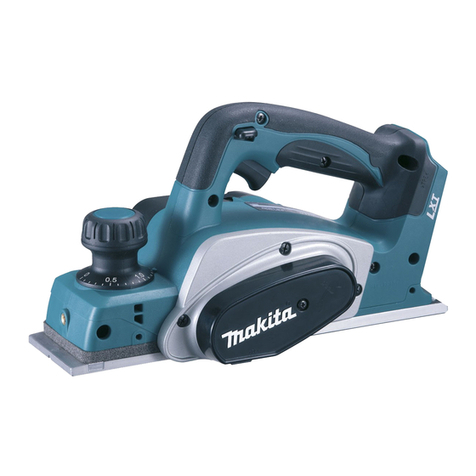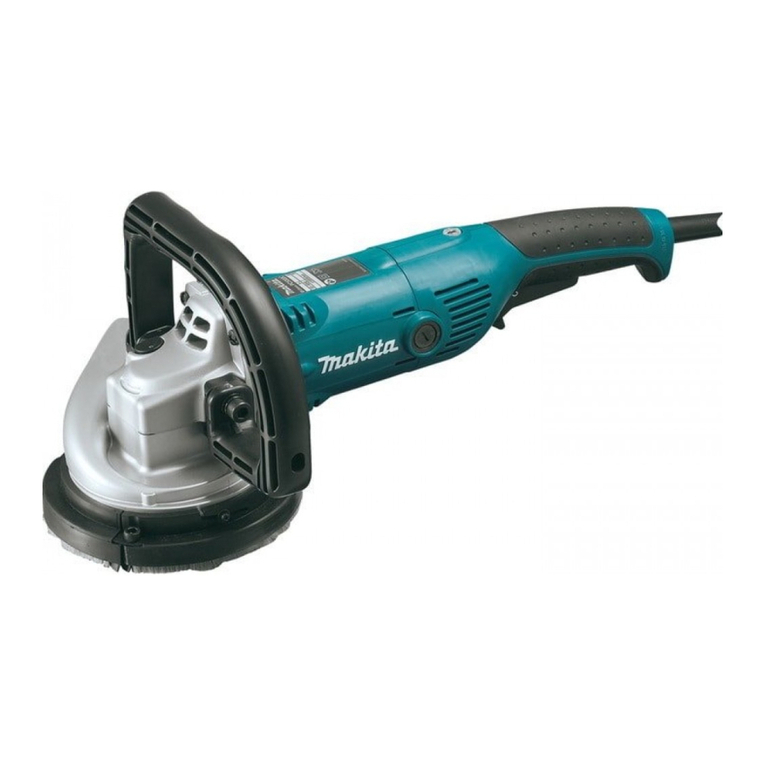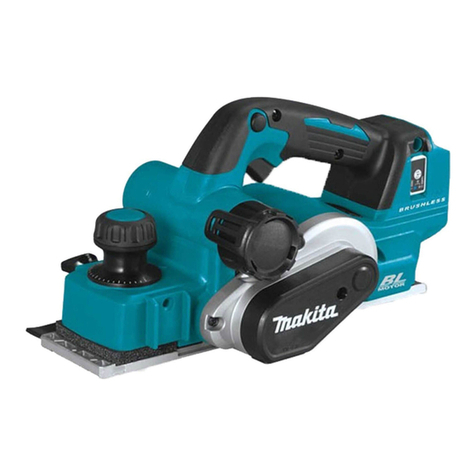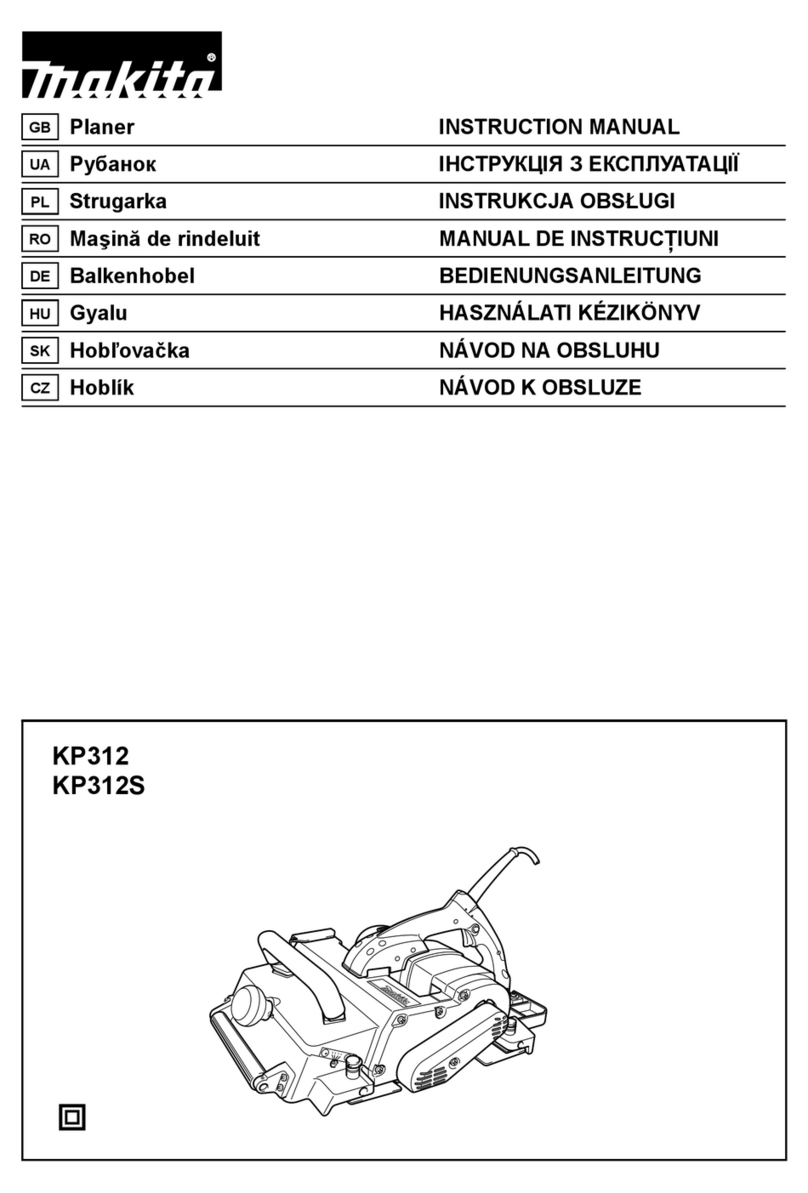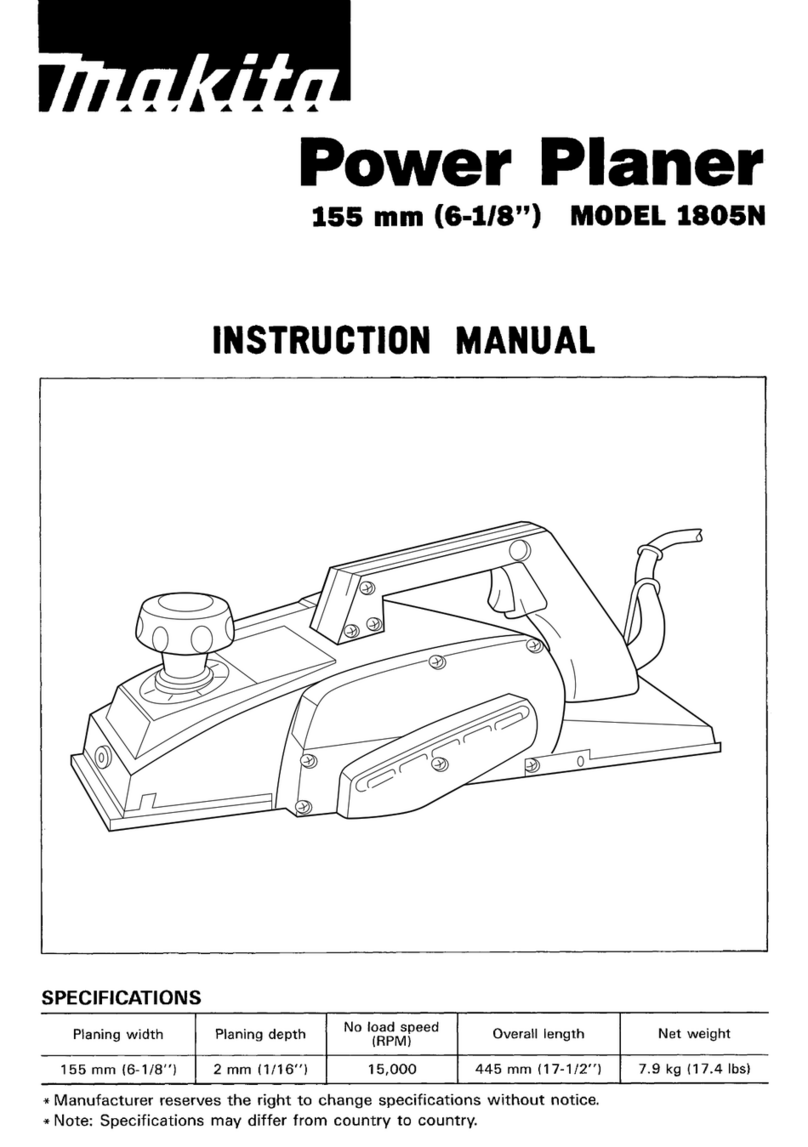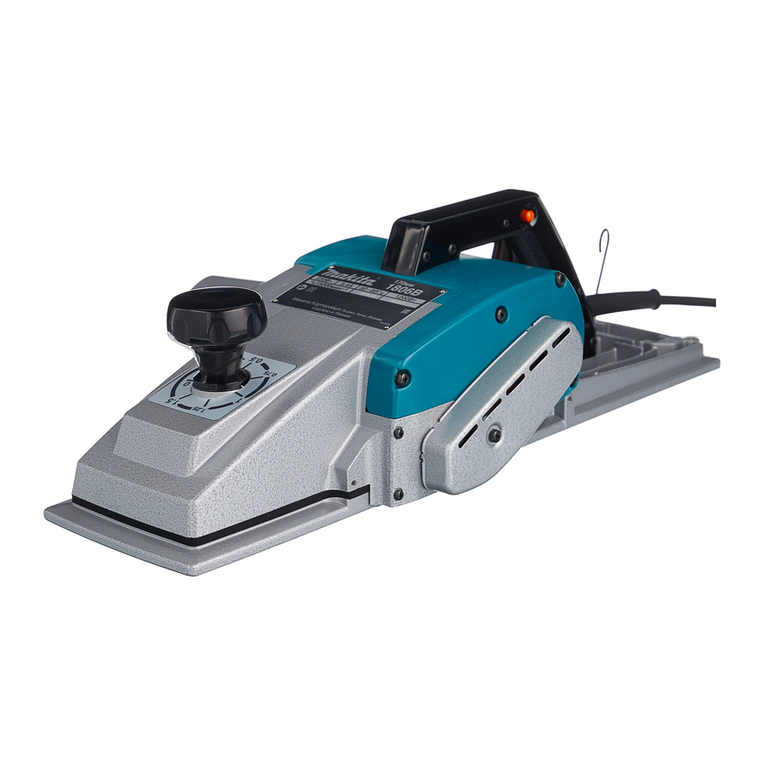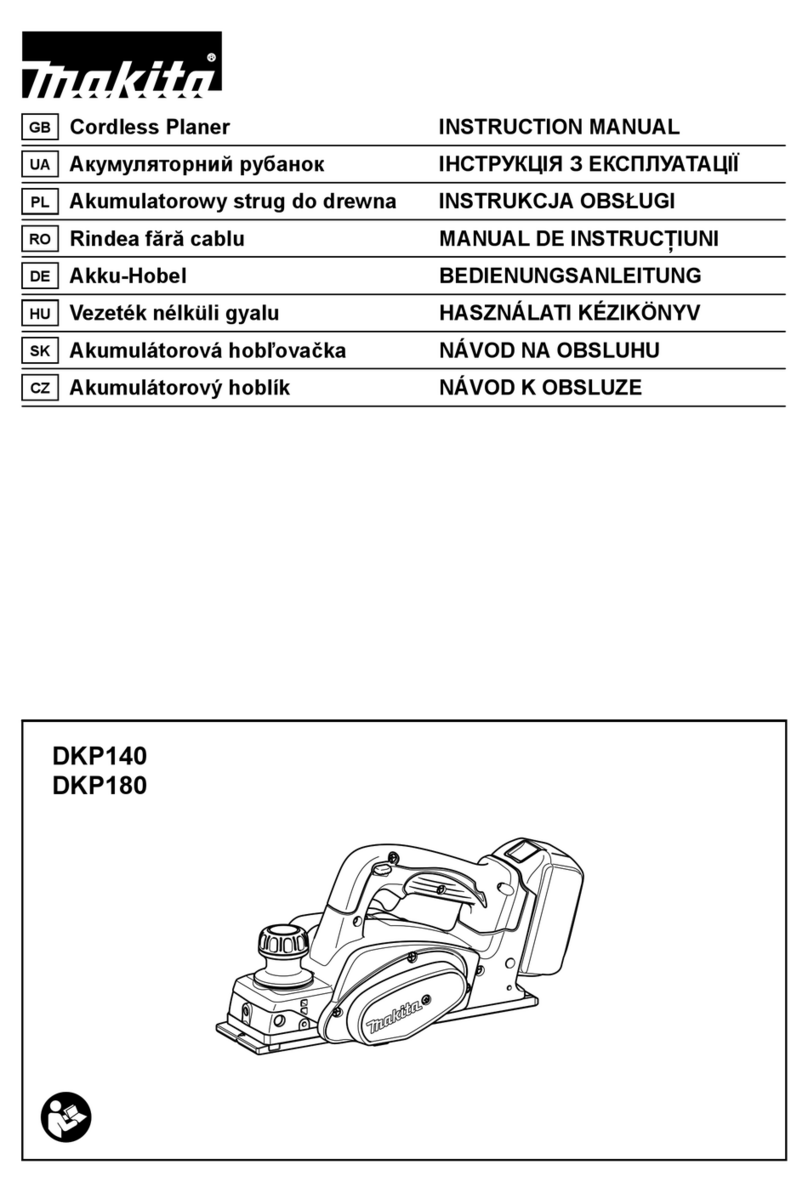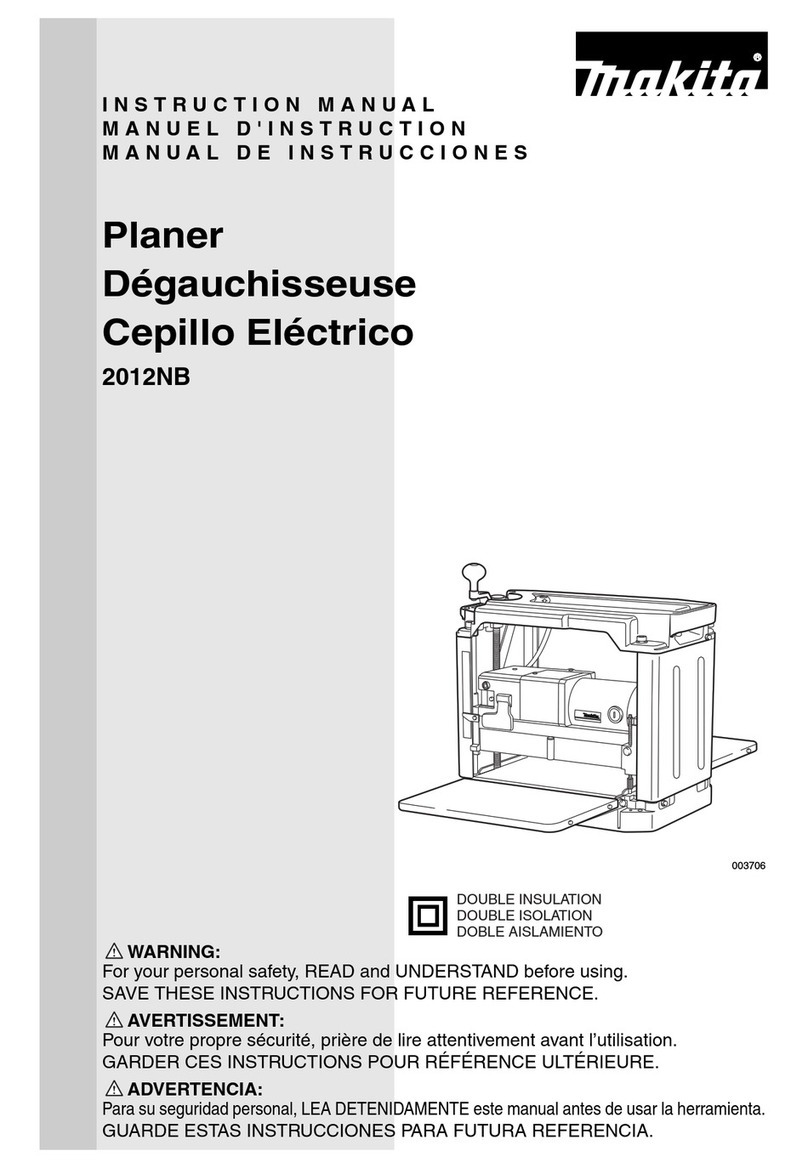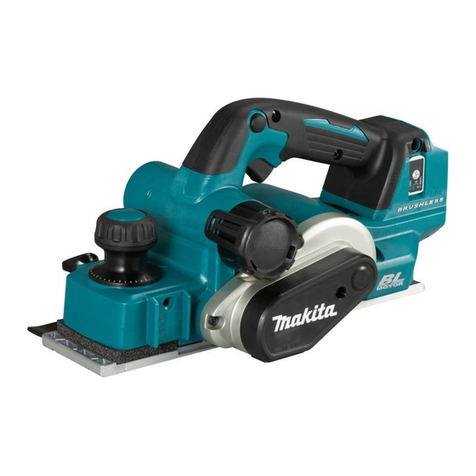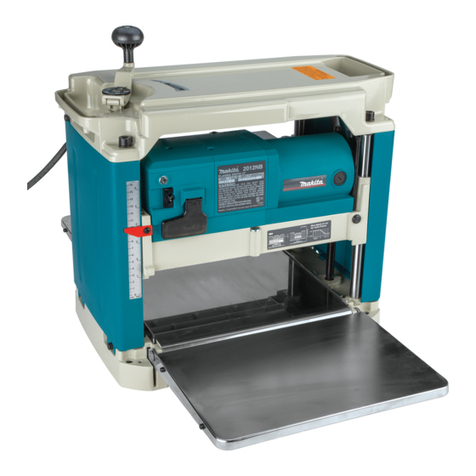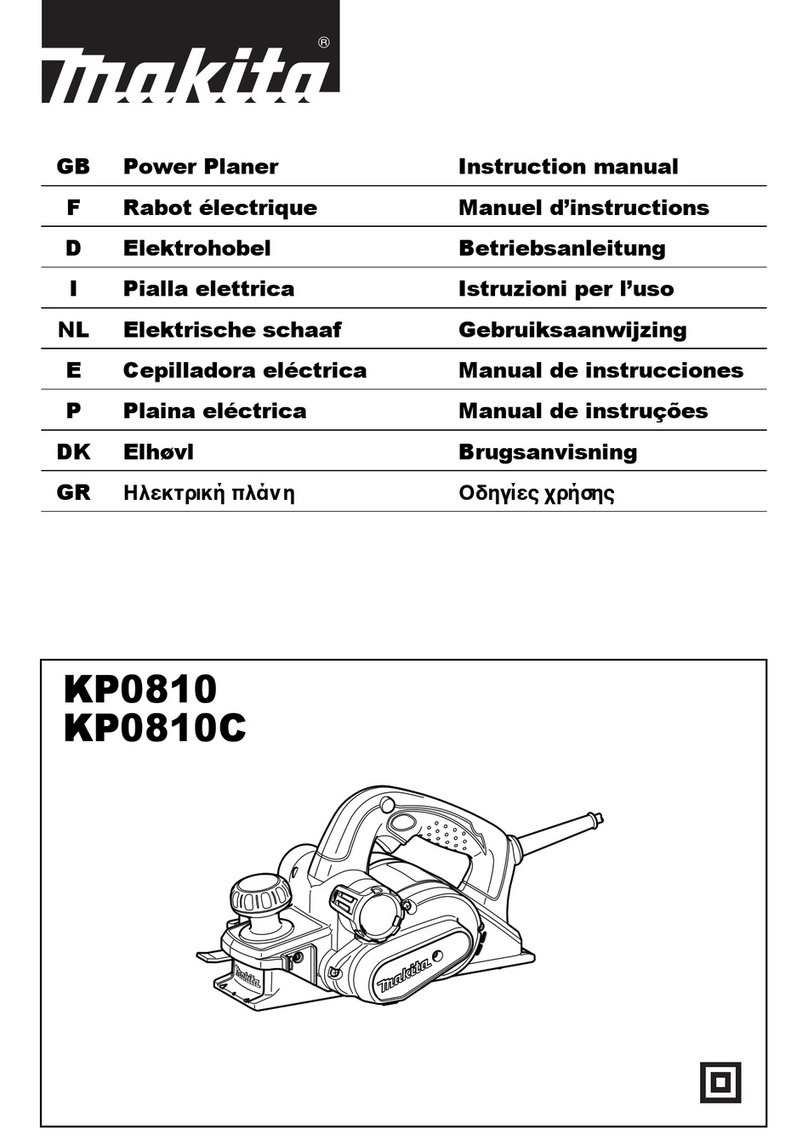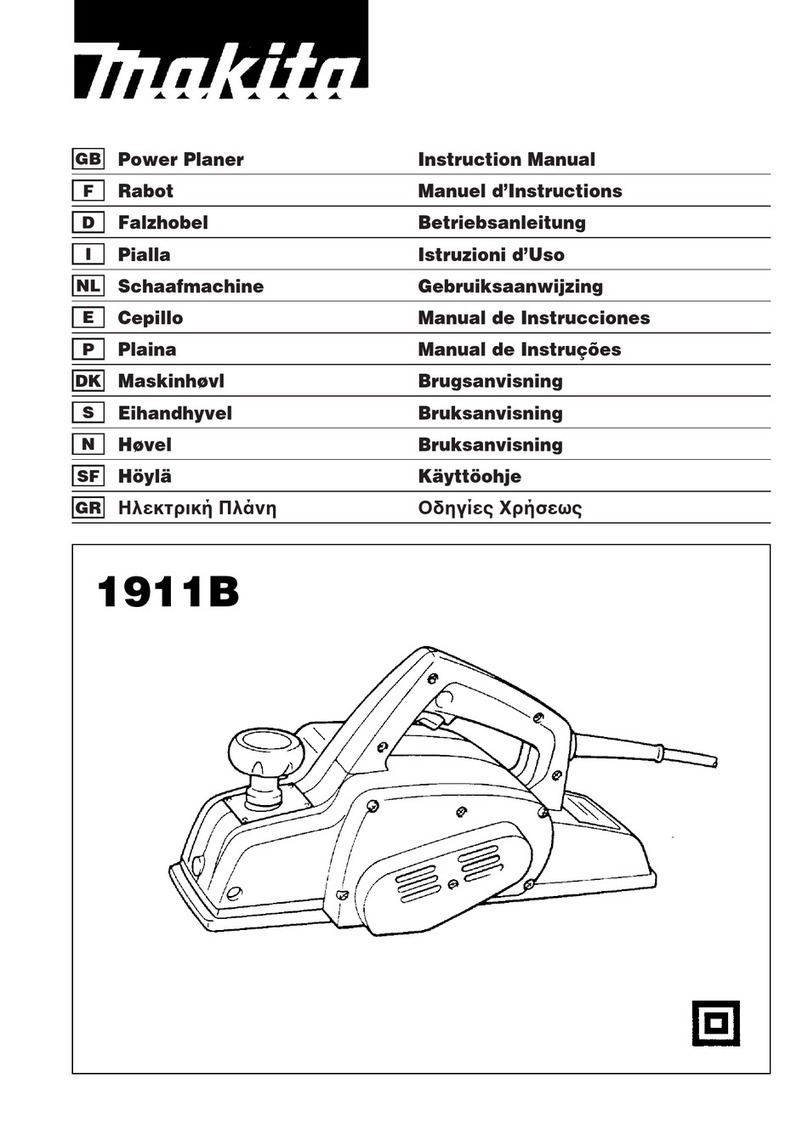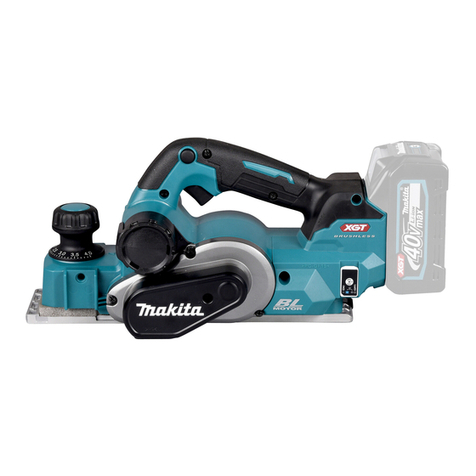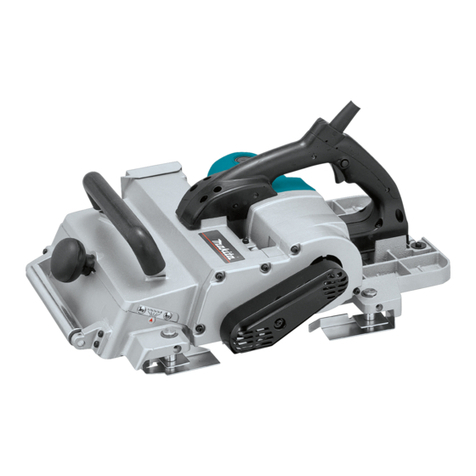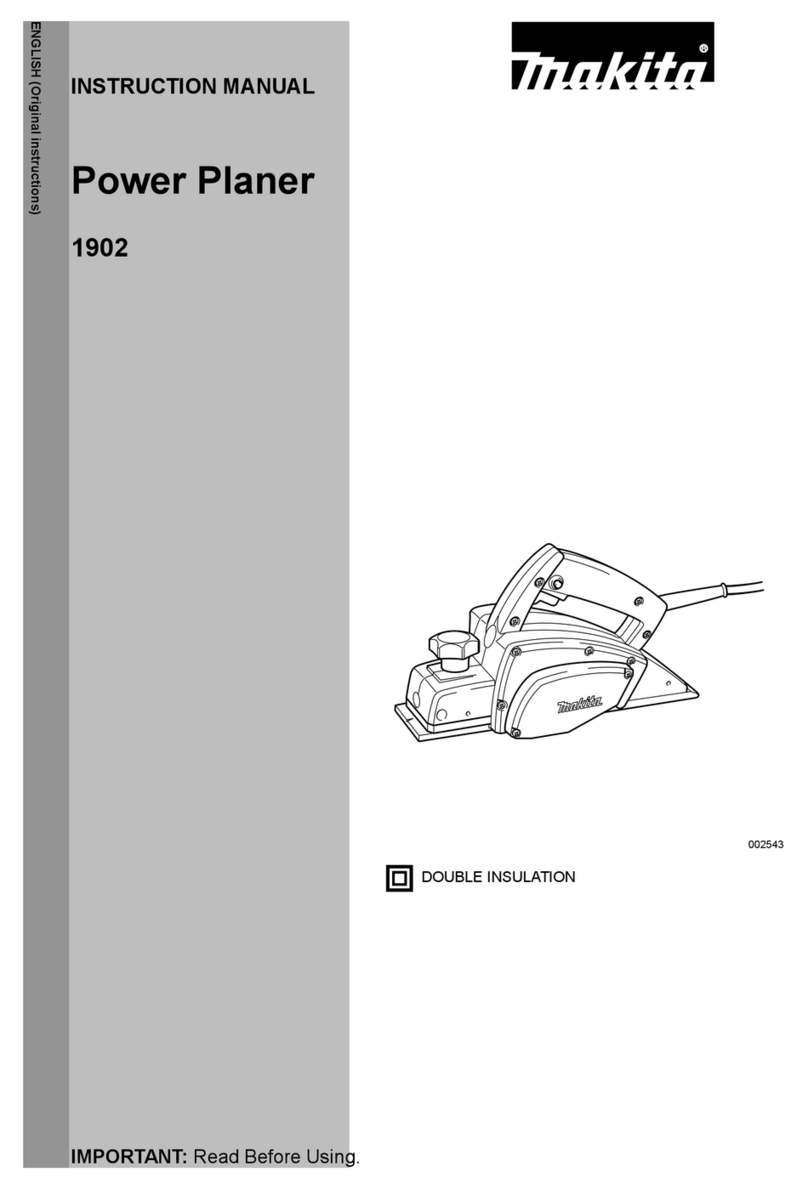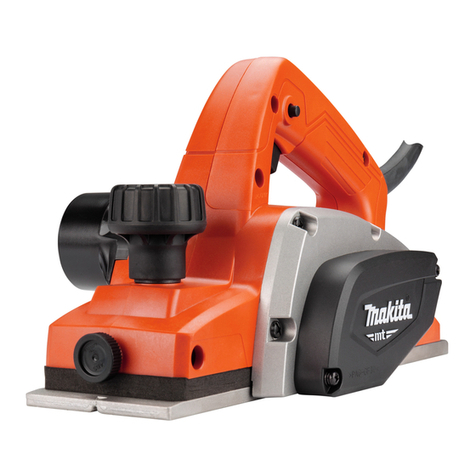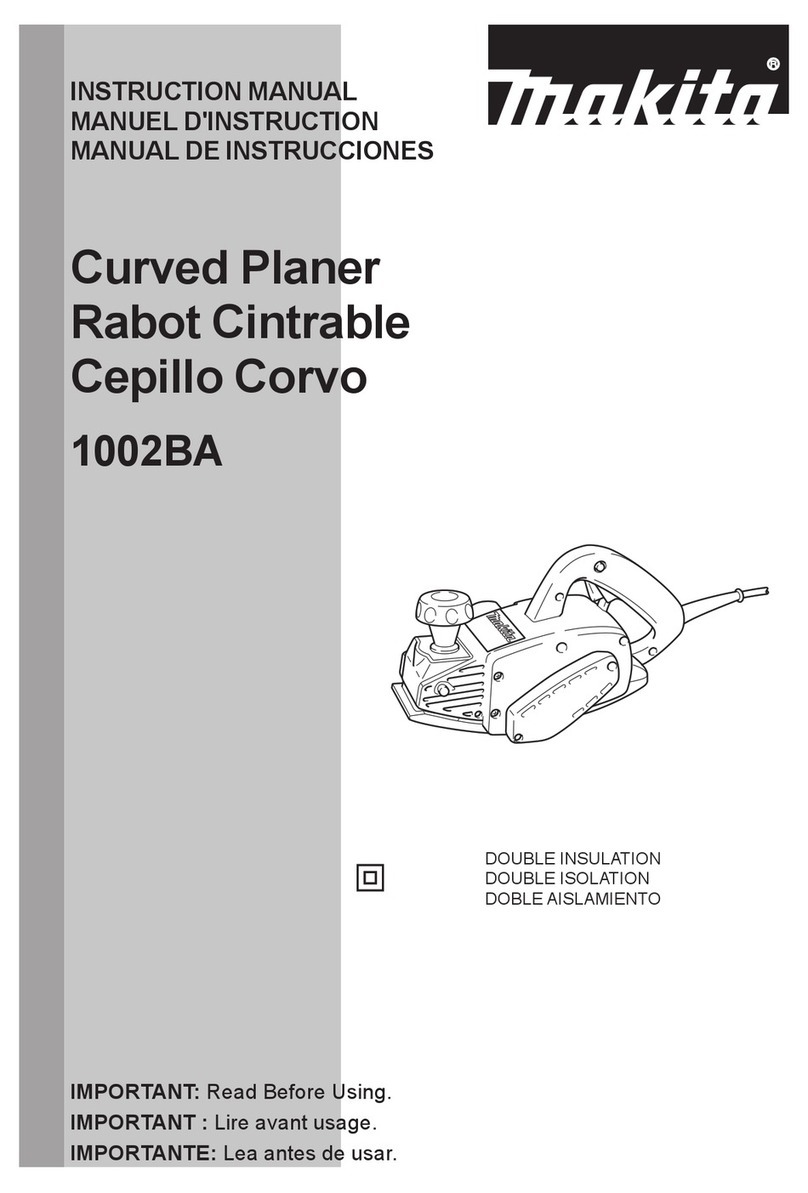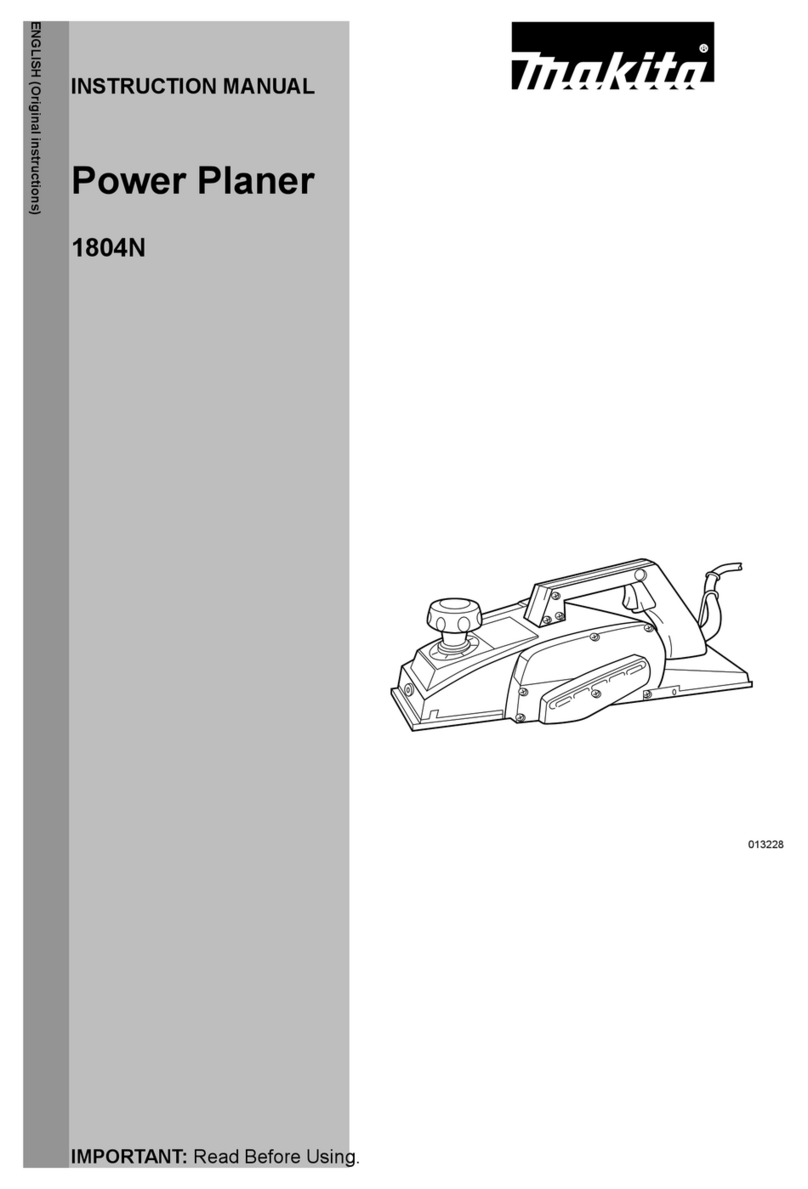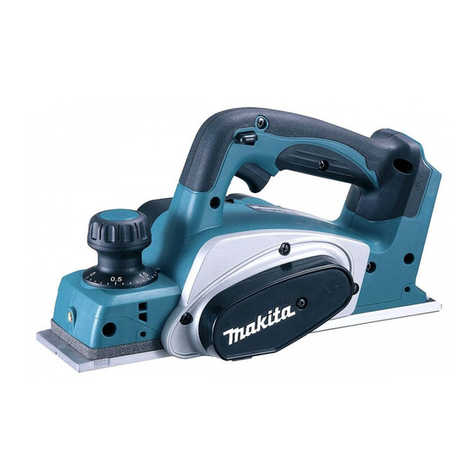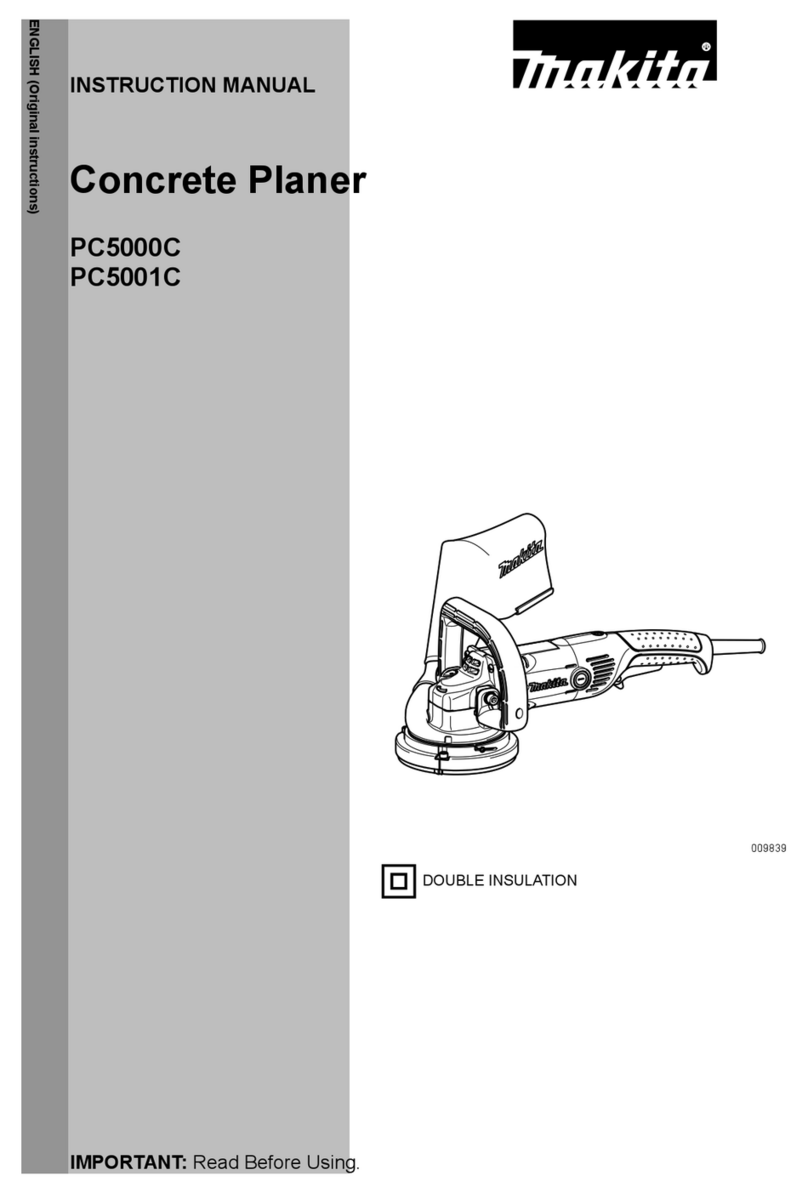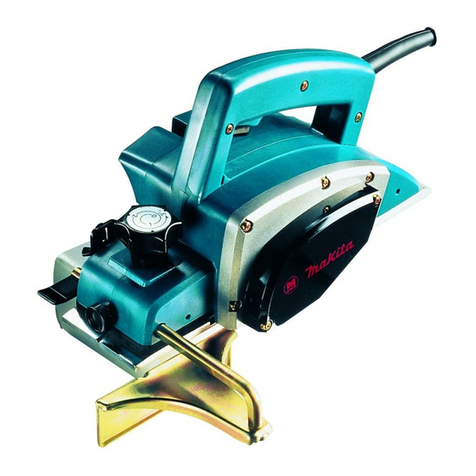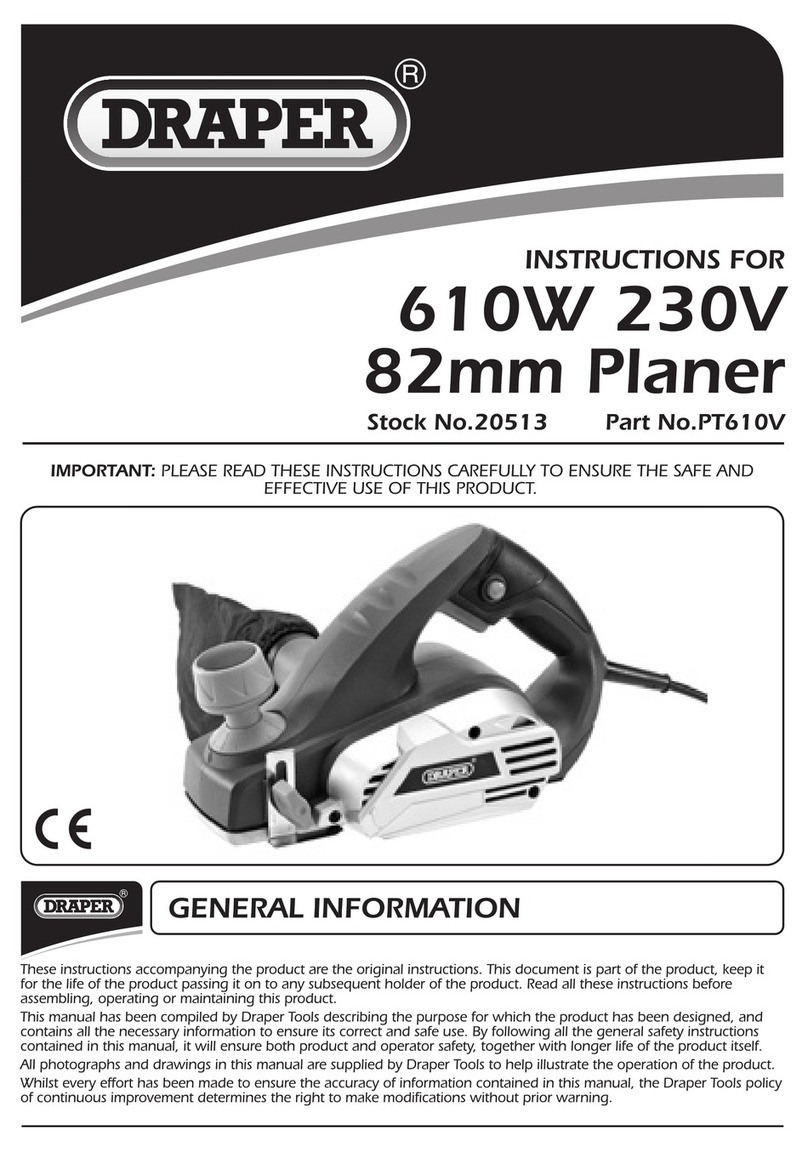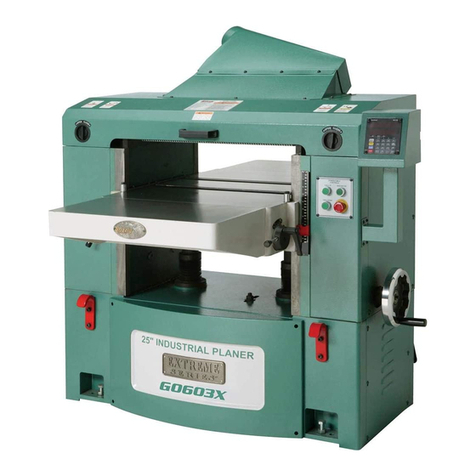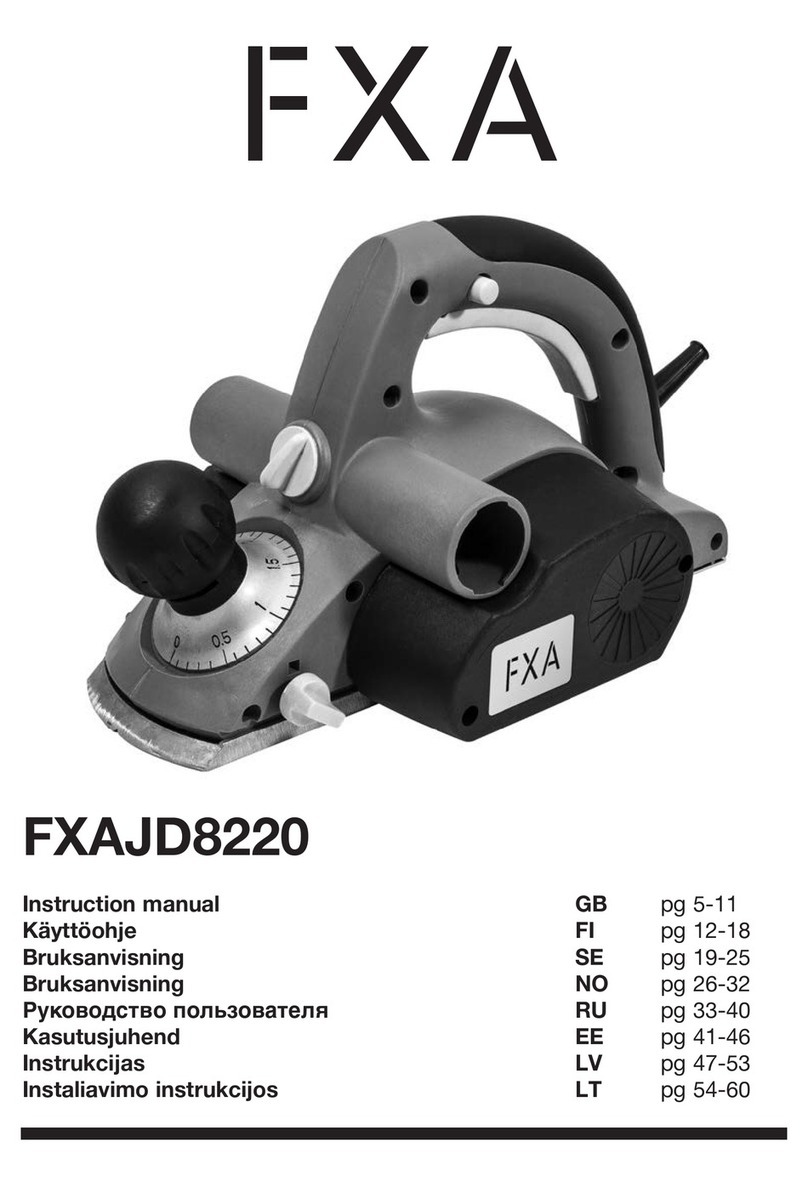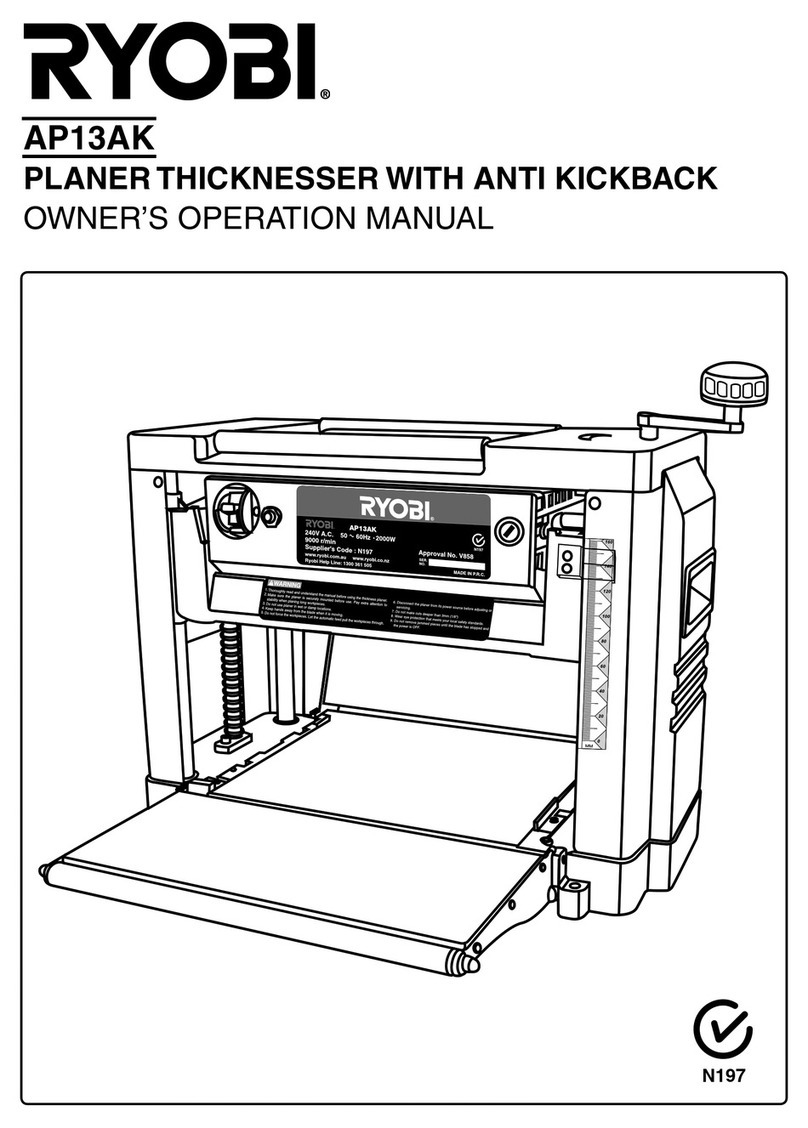
Instellen van schaafdiepte (Fig. 4)
De schaafdiepte is heel eenvoudig in te stellen door
de knop voor op het gereedschap te verdraaien.
Werking van de trekschakelaar
LET OP:
Alvorens de machine op netstroom aan te sluiten,
dient u altijd te controleren of de trekschakelaar
behoorlijk werkt en bij het loslaten naar de ‘‘OFF’’
positie terugkeert.
Voor machines zonder vastzetknop en
ontgrendelknop (Fig. 5)
Om de machine in te schakelen, drukt u gewoon de
trekschakelaar in. Laat de schakelaar los om de
machine uit te schakelen.
Voor machines met een vastzetknop (Fig. 6)
Om de machine in te schakelen, drukt u gewoon de
trekschakelaar in. Laat de schakelaar los om de
machine uit te schakelen. Voor continu gebruik, eerst
de trekschakelaar en dan de vastzetknop indrukken.
Om de machine vanuit de vergrendelde stand te
stoppen, de trekschakelaar helemaal indrukken en
deze dan loslaten.
Voor machines met een ontgrendelknop (Fig. 7)
Een ontgrendelknop is voorzien om te voorkomen dat
de trekschakelaar per toeval wordt ingedrukt. Om de
machine te starten, druk de ontgrendelknop in en druk
dan de trekschakelaar in. Om de machine te stoppen,
de trekschakelaar loslaten.
Schaven (Fig. 8)
Leg eerst het voorste zoolvlak plat op het oppervlak
van het werkstuk, zonder dat de messen nog iets
aanraken. Schakel het gereedschap in en wacht
totdat de messen op volle snelheid draaien. Hierna
beweegt u het gereedschap langzaam vooruit. Oefen
druk uit op het voorste gedeelte van het gereedschap
als u begint te schaven en op het achterste gedeelte
als het einde nadert. Het schaven gaat gemakkelijker
als u het werkstuk een beetje schuins houdt, zodat u
schaaft met het gereedschap iets naar beneden
gericht.
De snelheid waarmee u schaaft en de schaaftdiepte
bepalen het resultaat. De snelheid van verspanen zelf
is zodanig dat de spanen nooit klemraken. Voor ruw
schaven kunt u de schaafdiepte vermeerderen, terwijl
voor een goede afwerking de schaafdiepte vermind-
erd moet worden en het gereedschap langzamer
vooruitbewogen dient te worden.
Aanscherpen van de schaafmessen
(Fig. 9, 10 en 11)
Houd uw schaafmessen altijd scherp om de best
mogelijke resultaten te krijgen. Gebruik de slijphouder
om bramen te verwijderen en fijn geslepen randen te
krijgen.
Draai eerst de twee vleugelmoeren op de houder los
en steek messen (A) en (B) erin zodat deze met
zijkanten (C) en (D) in aanraking komen. Draai dan de
twee vleugelmoeren vast.
Dompel de wetsteen voor 2 of 3 minuten in water
alvorens aan te scherpen. Houd de aanscherphouder
zodanig, dat beide messen met de wetsteen in aan-
raking komen voor gelijktijdig aanscherpen onder
dezelfde hoek.
Aansluiten van een stofzuiger
Voor Europese landen en gebieden (Fig. 12 en 13)
Voor stofvrij schaven sluit u een Makita-stofzuiger aan
op uw machine. Monteer de zuigkop (bijgeleverd
onderdeel) op de machine door gebruikmaking van
de bijgeleverde schroeven. Sluit daarna een slang
van de stofzuiger aan op de zuigkop (zie Fig. 13).
Voor andere landen en gebieden
Om een Makita-stofzuiger aan uw machine te beves-
tigen, hebt u een verbindingsstuk en scharnierstuk
(los verkrijgbare accessoires) nodig. Voor het
verbindingsstuk en scharnierstuk dient u een catalo-
gus of vertegenwoordiger van Makita te raadplegen.
ONDERHOUD
LET OP:
Zorg er altijd voor dat de machine is uitgeschakeld en
de stekker uit het stopcontact is verwijderd alvorens
onderhoud aan de machine uit te voeren.
Vervangen van koolborstels
(Fig. 14, 15 en 16)
Vervang de koolborstels wanneer deze tot aan de
limietmarkering zijn versleten. Verwijder eerst de
spaanafvoer en vervang dan de koolborstels. Ver-
vang altijd beide koolsborstels gelijktijdig door gelijk-
soortige koolborstels.
Opdat het gereedschap veilig en betrouwbaar blijft,
dienen alle reparaties, onderhoud of afstellingen te
worden uitgevoerd bij een erkend Makita service
centrum.
1806B (Nl) (’100. 9. 28)
19
